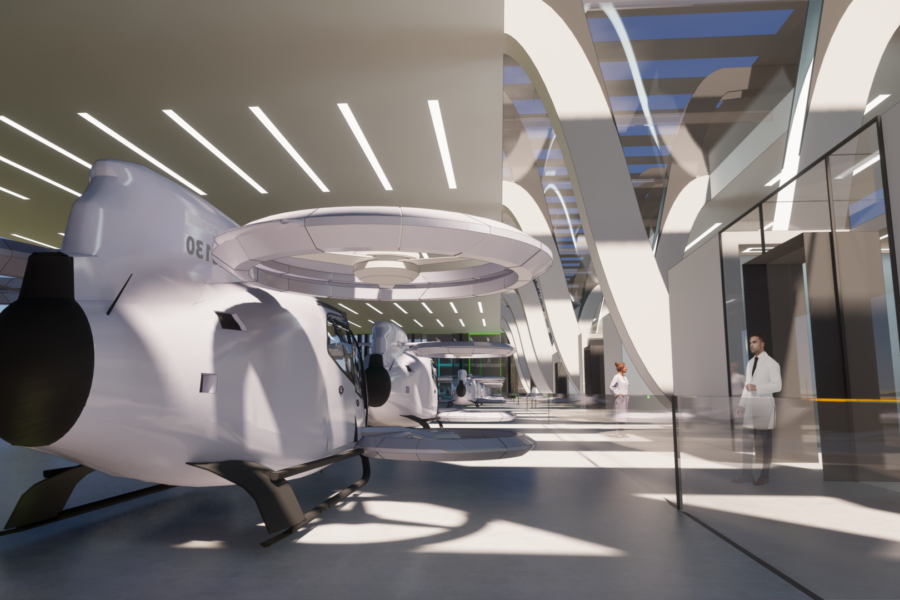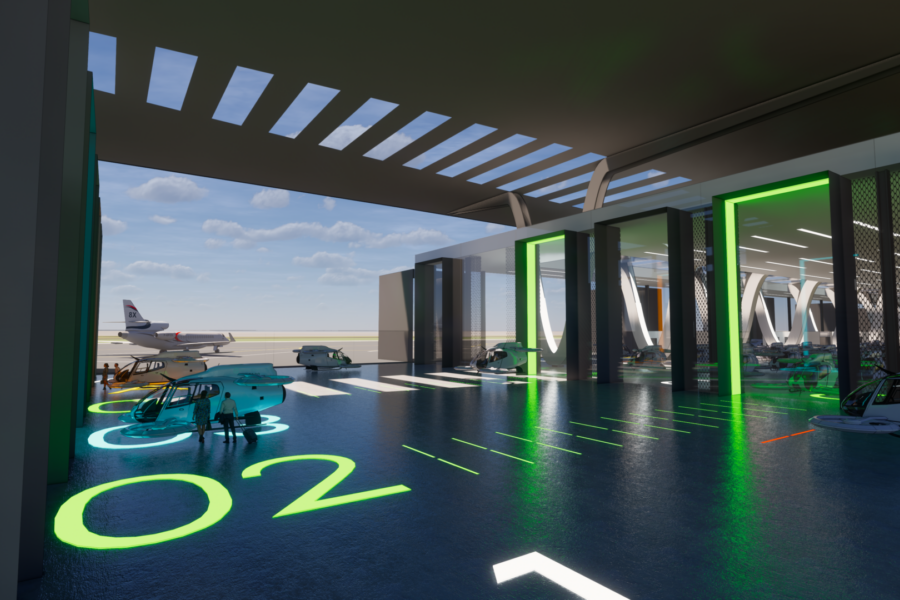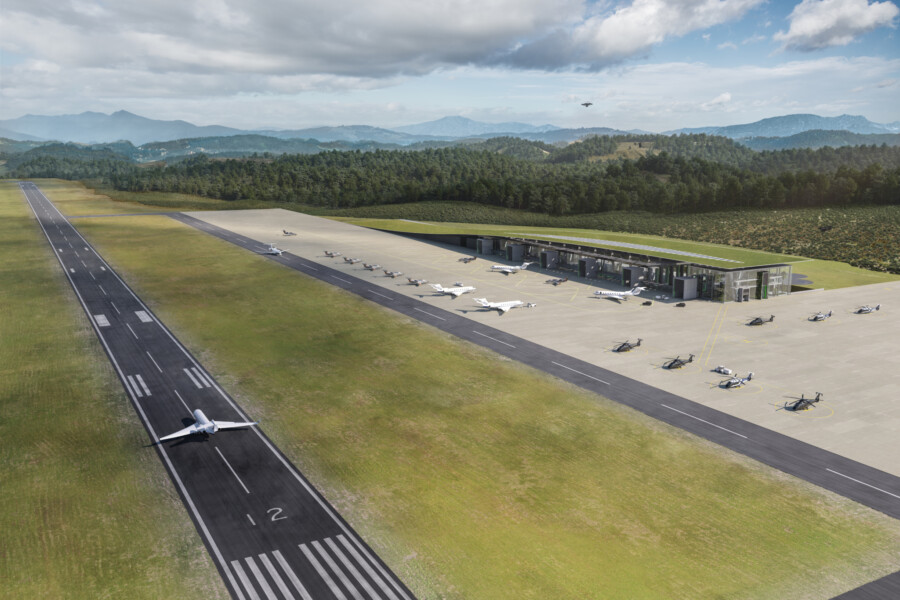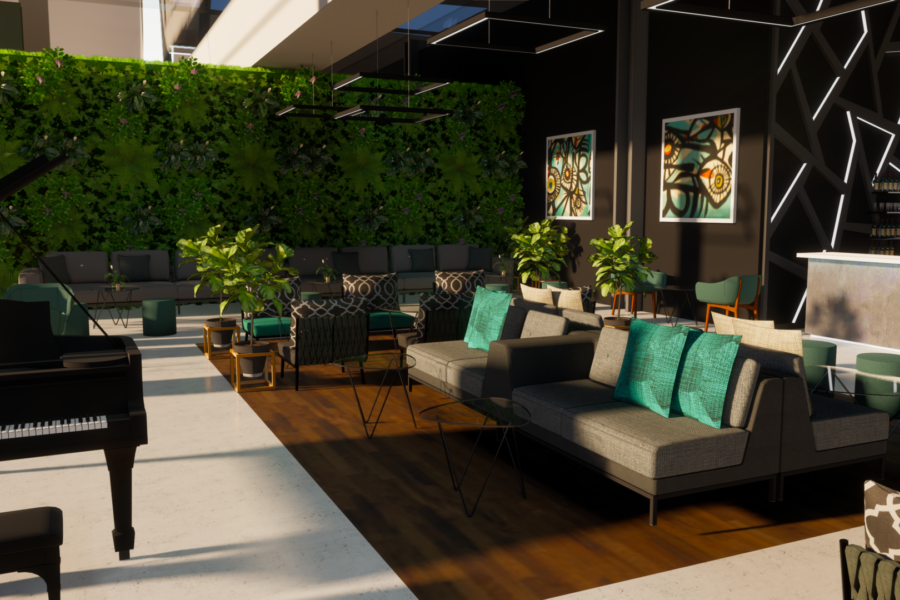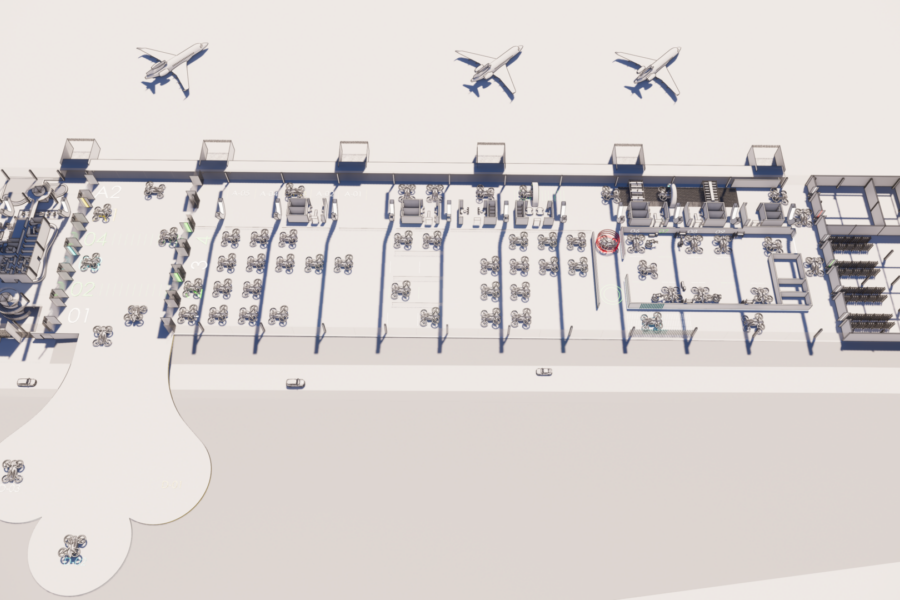
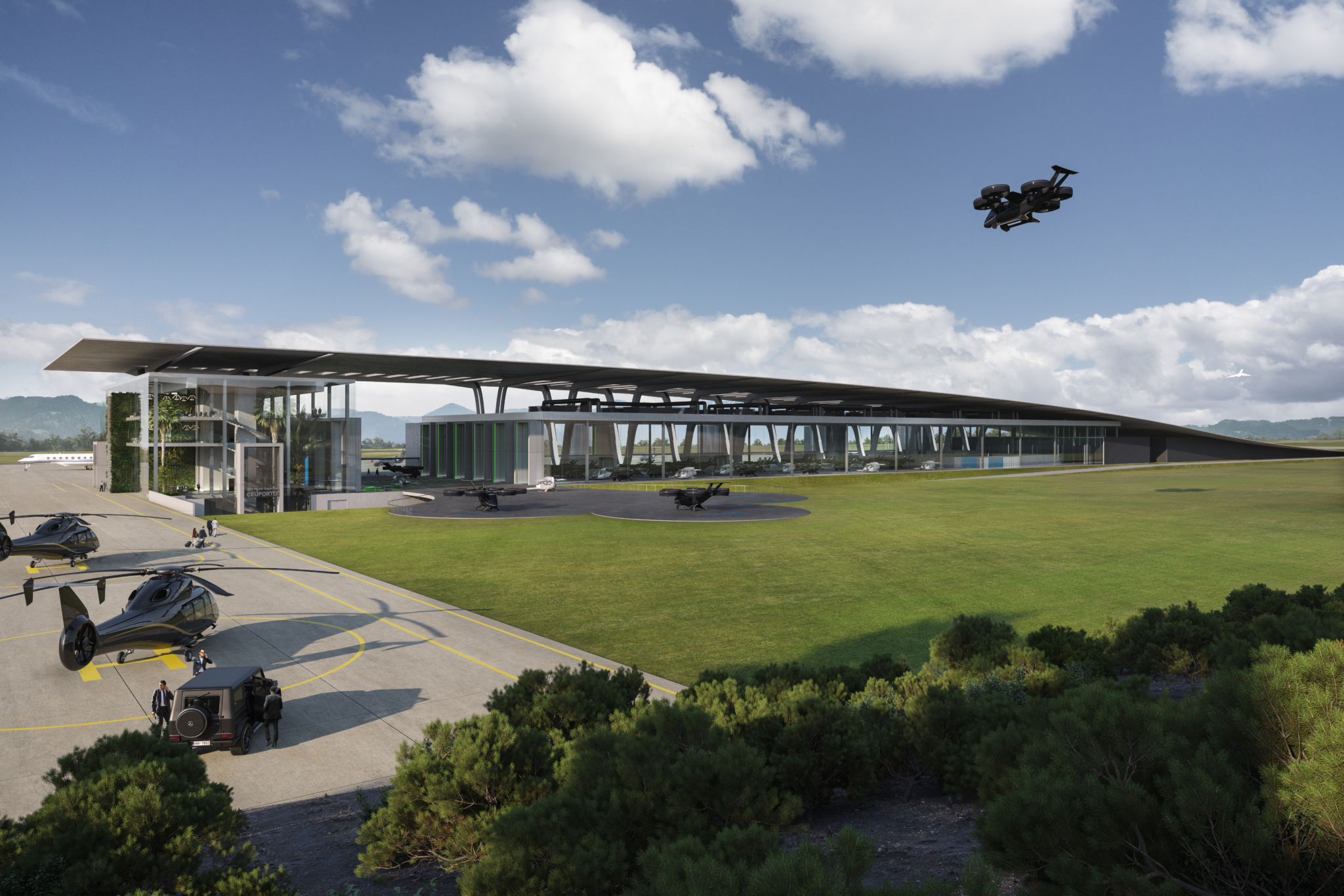
São Paulo eVTOL Drone Hub Location City: São Paulo, Brazil
Designing for a future of personalised drone travel.
Key Info
- Includes:
- Vehicle management hall, customer services and facility management module, passenger embarkation atrium, take-off-and-landing pans, accommodation pods, business facilities, retail and F&B.
- Status:
- Feasibility stage
Map Location
A new passenger building type
Chapman Taylor’s Transport Research Group conducted a Feasibility Study exploring a potential new building type for the Brazilian city of São Paulo which caters for the emergence of eVTOL (Electronic Vertical Take-Off and Landing) drone technology.
While mass ownership of PAVs (Personalised Air Vehicles) may be some years away, the potential of air taxis is generating increasing interest and excitement. There are numerous start-ups and established players developing hundreds of eVTOL concepts to enter what is seen as a potentially extremely lucrative market.
Advanced drone facilities
These services are being formulated as conventional driver and passenger services as well as advanced drone vehicles facilitated by structured airspace, 5G and the potential for safe and secure data networks.
As technology develops, the prospect of all-electric vehicles, well-suited for short distances at medium speed, becomes more real, promising a great addition to integrated urban transport networks. Currently and for longer distances, hybrid-electric concepts can provide the necessary range while still offering quieter, environmentally friendly transport.
Two core elements
The plan comprises two main components. The first, the body, consists of the main single vehicle management hall and the second, the head, is the customer services and facility management module. Sitting between the two primary elements is the passenger embarkation and disembarkation atrium; a series of take-off and landing pans extend from the atrium, with eVTOLs marshalled to and from these pad by remote-controlled tugs. The two solid elements within the main hall are the battery charging area and the level B maintenance workshop.
Linking with city centre landing pads
Upon introduction, the service will focus on a route from the airport to city destinations, using the many rooftop landing opportunities that already exist in São Paulo along with adaptable potential sites, such as multi-level car park structures. In time, the hub base will be augmented by the connection of these point to point locations, supporting a wider city connection.
The vehicles themselves will be limited by their battery charge capacities and therefore we need to establish charging stations at key locations in partnership with building owners. There is also scope for individuals or small parties to share vehicles with others where their destinations coincide.
A congested metropolis
With around 500 registered helicopters and 700 flights per day, the São Paulo metropolitan area, with its 20 million inhabitants, has the biggest helicopter fleet in the world. These have become essential to those in the city who can afford them, and to those visiting, to avoid the congestion.
The hub design includes a business facility with flexible meeting rooms, breakout spaces and informal lounge areas. All areas carry the latest business support and communication technology. These facilities will allow customers to make use of any dwell time, to conduct additional meetings or to conduct business without the need to travel into São Paulo city.
Transparency and operational efficiency
The design focuses on operational flow as well as a desire to develop transparency so that customers can see the process of managing and moving the vehicles through the facility.
The defining element is the curving, strong and protective floating roof, which allows clear comprehension and unimpeded flows and processes.
